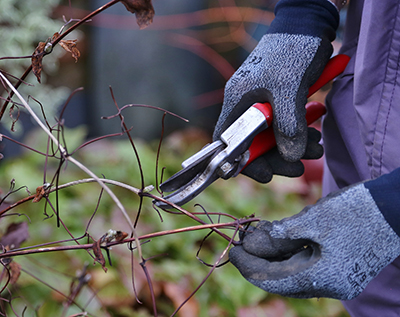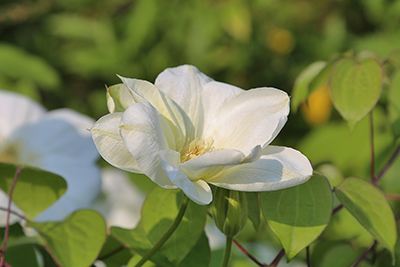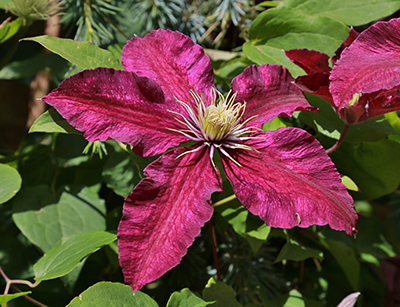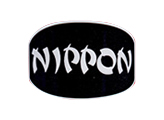Pruning Clematis
Pruning Clematis
Clematis pruning can be very confusing. When you buy a plant the label often give reasonable advice about how and when to prune. However, when a plant has been in the garden for a season or two it is most likely that the label has gone missing and you probably cannot remember which variety it is. You could turn to the internet or a good reference book, which will tell you how to deal with the various types of clematis. But you may not sure of the type, especially if it is one of the large flowered hybrids.
When to prune
The one thing you will remember is when the plant flowers, and that is a good guide to time and amount of pruning necessary. The rule is really the same as it is for flowering shrubs: prune soon after flowering, if you prune at all. So if a clematis flowers early in the year, you prune when the flowers fade. If it prunes late in the year you leave it and prune in late winter or early spring.
How much should you prune?
A good guide is to remember that the later a clematis flowers in the year, the more pruning it needs. So generally clematis that flower in spring need little or no pruning at all. Hence the saying: “If it flowers before June, don’t prune”.
 This is not entirely true. Two of the functions of pruning are to encourage new growth and to keep plants in check. So the early flowering Clematis montana benefits from removal of some stems each year to encourage new growth from lower down on the plants. It also helps to limit the extent of growth. Pruning this way also allows some of the seed-heads to develop to become an attractive feature later in the year.
This is not entirely true. Two of the functions of pruning are to encourage new growth and to keep plants in check. So the early flowering Clematis montana benefits from removal of some stems each year to encourage new growth from lower down on the plants. It also helps to limit the extent of growth. Pruning this way also allows some of the seed-heads to develop to become an attractive feature later in the year.
An early flowering variety of large-flowered clematis, such as Clematis ‘Guernsey Cream’ just needs any dead growth removing in late winter. If further cutting back is necessary, this should be done straight after flowering.
Those clematis that flower later in the year, especially the varieties of Clematis viticella, which come into their own in late summer, can be cut right back to 30cm (12”) in late winter. They bloom on the new growth that is produced that year. These clematis are ideal to grow through large, early flowering trees and shrubs.
Do you have to prune all large-flowered clematis?
One of the main reasons to prune the large flowered clematis is to encourage shoots lower down on the plants, in other words to prevent the plants from becoming leggy. However many of the modern varieties have been bred to remain compact and they produce shoots and therefore flowers from ground level. They require little or no pruning, except a tidy up in late winter to remove and dead or untidy ends.
These compact varieties, such as the showy Clematis ‘Ooh La La’ are perfect for small gardens and to grow in pots.
Pruning after planting
Whatever the pruning requirements, any clematis should be pruned very hard the first spring after it has been planted. Just before the plant starts to grow, cut all stems back to 15-20 cm (6-8ins) above soil level. This will encourage branching and help to cultivate a plant which is bushy at the base.
Then it is time to feed. Sprinkle a handful of Vitax Clematis Fertiliser around the plant, lightly work it into the soil surface and water thoroughly. This will provide your clematis with all the nutrients it needs for healthy growth and plenty of potash for abundant flowers.
Established clematis should be fed annually with Vitax Clematis Fertiliser in just the same way, after pruning or in early spring and again in mid-summer.
Andy McIndoe for Vitax
Your login details have been used by another user or machine. Login details can only be used once at any one time so you have therefore automatically been logged out. Please contact your sites administrator if you believe this other user or machine has unauthorised access.












